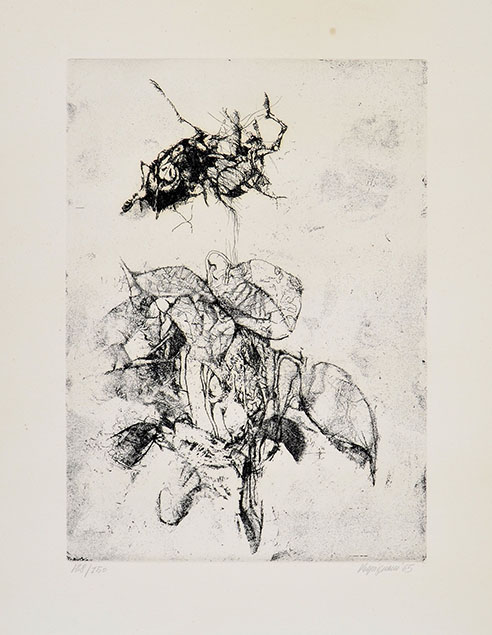(Rome 1924 - 2001 )
INSETTI, 1965
Etching, numbered, signed and dated in pencil at bottom 138/150 Vespignani '65. To the platemark 344 X 247 mm, the full sheet 628 x 450
Renzo Vespignani was a painter and a skillful printmaker. He grew up in a Roman working-class suburb named Portonaccio and began to paint during the difficult years of the German occupation of Rome. His drawings in 1944 recorded the ravages of German-occupied Rome in realistic detail. Those images, often likened to German Expressionist works, were featured in his first solo exhibition at Rome's Galleria La Margherita in 1945.
After the war Vespignani contributed illustrations to political and literary journals, and in 1956 he co-founded Citta Aperta, a magazine dedicated to urban culture. By this time his work had begun to center on life in the harsh neighborhoods of Rome's periphery, displaying an affinity with the films and literature of Italian Neorealism. In 1963, with the painters, Ferroni, Ennio Calabria, Giuseppe Guerreschi, Piero Guccione, and the art critics Dario Micacchi, Antonio Del Guercio he founded the group Il Pro e il Contro. During the decade of the 1960s, Vespignani and the group sought to develop new critically and intellectually engaged figural art. Renzo Vespignani exhibited works across Italy and had participated in the Venice Biennale four times. A 1985 exhibition at the French Academy in Rome examined the rapport between Vespignani's work and that of the Neorealist poet and filmmaker Pier Paolo Pasolini.
